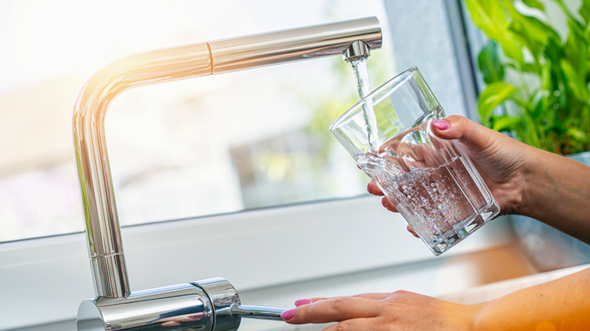
BLOG
—
Q&A with Steve Savage: Legionella in Building Water Systems
Buildings around the country are seeing an increased occurrence of Legionella and Legionnaires’ disease due to their prolonged shutdowns in the wake of COVID-19. Last month, Woolpert Plumbing Design Engineer Steve Savage shared some information about developing a water management program to help prevent and mitigate these issues.
Today he answers some questions regarding these occurrences that will help building owners and operators safely manage operations as they reopen:
Why are we seeing an increase in Legionella and Legionnaires’ disease?
Many buildings, including schools, gyms, restaurants, hotels, resorts and other public facilities, have been shut down since March. Water is sitting stagnant, allowing Legionella to grow and spread. For facilities lacking a proper water management program, or those who haven’t implemented it, the shutdown has provided an excellent opportunity for Legionella bacteria to thrive. Additionally, most people are unaware of Legionnaires’ disease, how it establishes itself in building water systems and how it can be contracted.
How can facilities prevent this occurrence?
It is important to understand that Legionella cannot be completely prevented—instead, the risk of exposure can be reduced. One of the most effective methods for limiting the risk of exposure is to flush or operate plumbing fixtures to prevent water stagnation. Stagnate water in the piping system promotes biofilm growth on piping walls, and Legionella bacteria use this growth to reproduce and spread throughout the water system. Stagnate water also allows the chlorine in treated water to dissipate, enabling Legionella bacteria to remain present in the piping system. Flushing the water system greatly reduces biofilm growth and permits chlorinated water from the municipal treatment plants to enter the system and kill the bacteria.
How can facilities best address this issue when it is identified?
The most important initial action item is to prevent anyone from being exposed to the water system and the risk of infection. If a facility has a water management program in place, then it should execute the plan as indicated. Facilities without water management programs will need to contact their local health officials for guidance.
What best management practices should be adopted to prevent this from happening long term?
As mentioned earlier, Legionella cannot be prevented, but exposure to it and the risk of infection can be reduced. Several factors can account for the presence of Legionella in facilities. These factors occur both inside and outside of facilities, as well as within and beyond the control of facility managers. Best management practices focus on the awareness of risk factors and the implementation of proper water management programs. EPA guidelines for system flushing and a CDC toolkit for water management programs provide much useful information. However, because these guidelines are not specific to any one facility, the best preventative methods will come from local health officials. In addition, the CDC also offers this guidance for reopening buildings to prevent the spread of this disease.
Woolpert’s team of water management and facility design experts provides facility exposure assessments, recommends mitigation strategies and designs customized water management programs. We have the expertise you need to keep your building safe and healthy.
Share this Post



